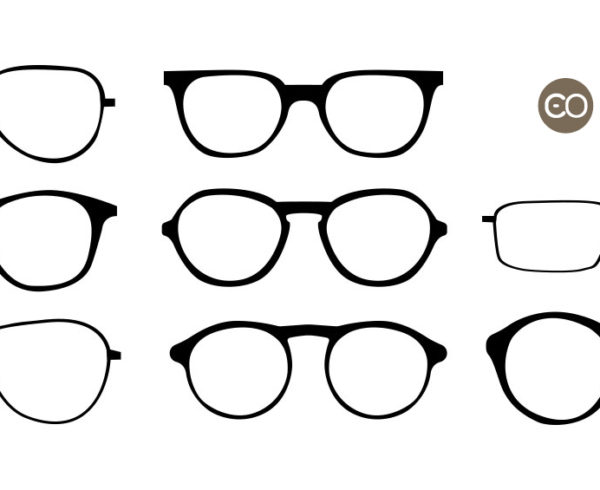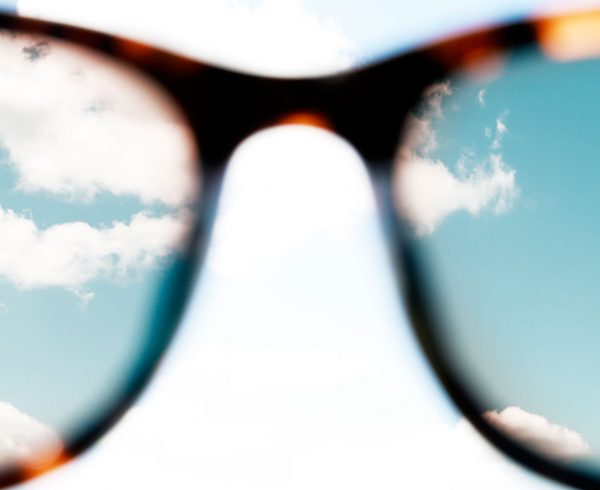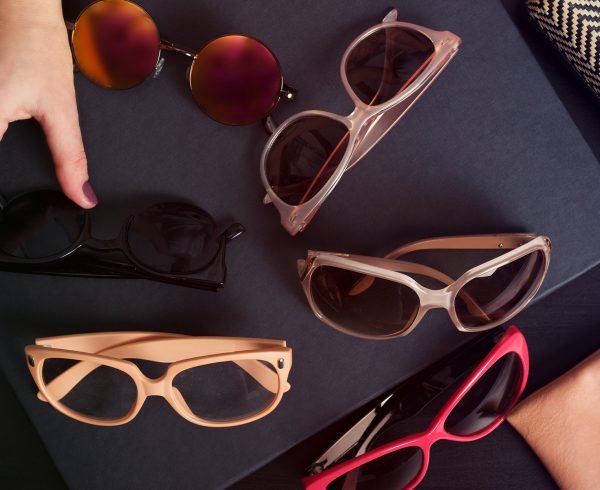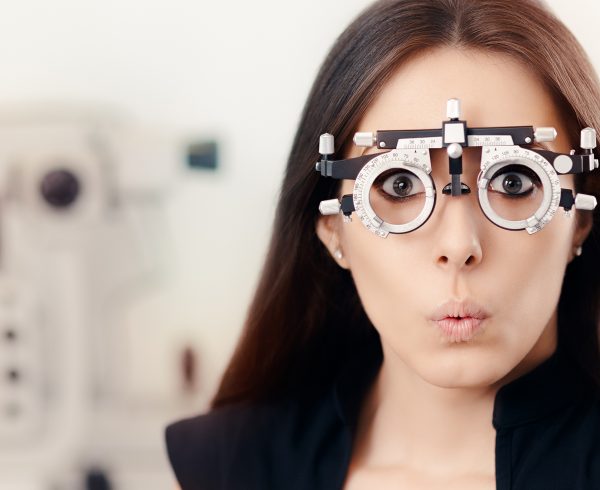Every summer, glasses wearers have the problem of switching between sunglasses and prescription glasses. Out of the office for a snack outside, into a shop for a quick errand, one minute it’s cloudy, then sunny again, and so it goes on all day. You constantly have to handle two pairs of glasses and take out glasses cases. Changing light conditions are also an annoying problem for outdoor sports enthusiasts with impaired vision. But there is a solution! Self-tinting glasses do the work for you and are suitably tinted for any light
What are the advantages of photochromic sunglasses?
Dark lenses at lunch in the street café, lightly tinted lenses when the sky is overcast, clear lenses in the evening in front of the TV – self-tinting glasses are sunglasses and normal glasses in one and offer the greatest possible flexibility and glare protection in every light situation. However, the term self-tinting glasses is actually wrong, because only the lenses tint, not the entire glasses. What is correct, however, is that this invention makes the lives of glasses wearers a whole lot easier.
The idea was discovered by two American chemists, Stanley Donald Stookey and William Armistead, who patented the so-called photochromic lens in 1964. Their inspiration was nature: plants turn according to the light, the so-called phototropism. That is why self-tinting glasses are also called phototropic glasses.
And how do photochromic glasses work exactly?
The same chemical reaction is used for self-tinting lenses as for exposing black and white photos. Silver bromide or silver chloride is incorporated into the lens. UV light causes the silver compounds to break down into their components and the silver forms tiny crystals that change the colour of the glass. In black-and-white photos, this reaction is interrupted and fixed after exposure. The tint – and thus the image in the photo – remains.
With self-tinting lenses, on the other hand, nothing is fixed. As soon as you leave the sun and go back into the dark office, the silver crystals dissolve again and the chemical reaction proceeds in reverse. With photochromic glasses, the sunglass effect is only present when you really need it. The brightening process, however, is somewhat slower than the darkening process, which lasts only 15 to 30 seconds, depending on the lens technology. But after one or two minutes you will have clear vision again, even indoors. The temperature also influences the tint of photochromic lenses: the colder it is, the darker the lens becomes. Especially for people with light-sensitive eyes, the advantage of self-tinting lenses is that the eyes tire less quickly.
Self-Tinting Lenses: What You Should Know
When buying new self-tinting glasses, you should make sure that they have high-quality UV protection according to EU standards. After all, they also function as sunglasses, and a dark tint without a suitable UV filter against UV-A and UV-B rays does more harm to the eyes than good. For particularly strong UV radiation, for example at the beach or on snow-covered peaks, you should, however, go for regular sunglasses of protection category 3 or 4 as photochromic lenses are usually not suitable for this level.
For outdoor sports like running or cycling, on the other hand, self-tinting sunglasses are the perfect choice. No more stopping to change your glasses, no more squinting your eyes in sudden brightness. Thanks to self-tinting lenses, outdoor sports are twice as enjoyable. And the UV rays stay where they belong – behind the UV filter barrier.
Special Case: Driving with Photochromic Glasses
Conventional self-tinting glasses are only suitable to a limited extent for driving, because the windscreen of the car absorbs a large proportion of UV light. Therefore, the molecules in the lens do not adjust to the actual brightness, the lenses remain clear or are only slightly tinted. Here, the anti-glare protection of normal sunglasses has a clear advantage and guarantees the best visibility in road traffic even in bright sun. If you travel more by train or bike anyway, this small disadvantage of photochromic glasses is not so significant. For frequent drivers, there are special self-tinting driving glasses from some manufacturers, but they can be quite expensive.
How much do photochromic lenses cost?
Once you have found your favourite model in our online shop, your new glasses with self-tinting lenses are just a few clicks away. Simply click on “Order with prescription”, enter your prescription values in our Digital Opticians form and tick the self-tinting option in the Tinting category further down. Depending on your selected lens brand, you can choose from various lens tints such as blue, grey, green, brown, bronze and purple. By the way, photochromic lenses are available from just £110.
You’re not really convinced about photochromic lenses or you’re looking for sunglasses for driving or for extreme UV radiation? No problem, we offer plenty of stylish prescription glasses and sunglasses for every style and every light condition in our online shop.
 English
English Deutsch
Deutsch Svenska
Svenska Nederlands
Nederlands Français
Français polski
polski Österreich
Österreich Schweiz
Schweiz















